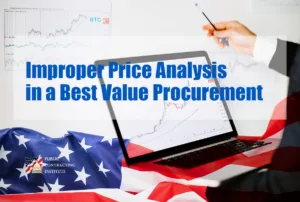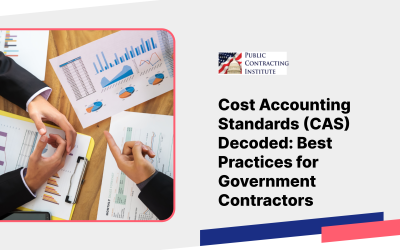Improper Price Analysis in a Best Value Procurement
In May 2012 the Department of Veterans Affairs (VA) issued a request for quotations to establish a blanket purchase agreement (BPA) for hazardous waste removal services. The best value evaluation scheme required the VA to consider offerors’ prices, past performance, and technical factors. Price was deemed to be less important than the other two factors combined. Three offers were submitted, including from Clean Harbors Environmental Services and from Triumvirate Environmental, Inc. Clean Harbors’ quoted price was $3,216,112.96 and Triumvirate’s quote was $2,186,045.00 – more than $1 million less.
The VA nevertheless awarded the BPA to Clean Harbors for posing the lowest risk (based on past performance) and for best technical score. The VA determined Clean Harbors’ price was reasonable. The VA also assessed Triumvirate’s risk for past performance as “low” and gave it a lower, but still acceptable, technical score. Triumvirate’s prices were also deemed reasonable, but unbalanced, because fifteen line items were “impossibly low.” To justify the higher price, the VA cited Clean Harbors’ higher technical score.
Triumvirate protested to the GAO, arguing that the VA’s price analysis was unreasonable and that the VA failed to document the best value tradeoff – that the better technical was worth the higher price. The GAO sustained the protest for two reasons.
First, the VA failed to demonstrate that Triumvirate’s pricing was unbalanced
– that it posed an unreasonable risk to the government. Pricing is unbalanced “when, despite an acceptable total evaluated price, the price of one or more contract line items is significantly overstated or understated.” A government agency must consider the risk that unbalanced pricing might result in unreasonably high prices. Here, the CO provide no documentation that Triumvirate’s prices were understated. Rather, the CO wrongly based his conclusion on Triumvirate’s past performance instead of on its quotation. Moreover, the vendors based their prices on estimated quantities established in the RFQ. The VA never indicated that the estimates were incorrect. Therefore, even if Triumvirate’s prices were unbalanced, the VA had no basis to conclude that it would pay higher prices.
Second, the VA failed to justify the price tradeoff.
When an RFQ establishes a best value scheme, the agency must meaningfully consider cost and justify paying a paying a higher price — even where price is not the most important evaluation factor. Here, the VA only considered whether prices were reasonable as compared to the vendors’ GSA schedule pricing. The VA should have articulated the actual evaluated prices, the price advantage, and the specific benefits associated with the higher price. Accordingly, the GAO sustained the protest, because the VA had failed meaningfully to consider price. The GAO ordered the VA to reconsider the quotations with proper price analysis and document the price/technical tradeoff. Triumvirate Environmental, Inc., B-406809, September 5, 2012.
PRACTICE TIP: Agencies’ best value tradeoffs must always consider price and must be fully documented.



